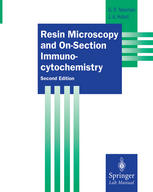

Most ebook files are in PDF format, so you can easily read them using various software such as Foxit Reader or directly on the Google Chrome browser.
Some ebook files are released by publishers in other formats such as .awz, .mobi, .epub, .fb2, etc. You may need to install specific software to read these formats on mobile/PC, such as Calibre.
Please read the tutorial at this link: https://ebookbell.com/faq
We offer FREE conversion to the popular formats you request; however, this may take some time. Therefore, right after payment, please email us, and we will try to provide the service as quickly as possible.
For some exceptional file formats or broken links (if any), please refrain from opening any disputes. Instead, email us first, and we will try to assist within a maximum of 6 hours.
EbookBell Team

4.8
14 reviewsSince antibodies tagged with markers have been developed, immunocytochemistry has become the method of choice for identifying tissue substances or for the localisation of nucleic acid in tissue by in situ hybridisation in molecular biology. Resin-embedded tissue is routinely used and new techniques are constantly introduced. Thus, the novice entering these fields has a breathtaking variety of methods open to him. This laboratory book covers the embedding of tissue using less sensitive epoxy resin methods to the more sensitive procedures employing the acrylics. The possibilities are discussed and results are presented so that an understanding of the techniques can be acquired and appropriate choices made.
In the first part of the book, the background of the various resins available are discussed and information on inexpensive alternative technologies where they exist is provided. The various steps involved in tissue processing, beginning with fixation, are first described in theory, then detailed protocols are presented for their application, including troubleshooting sections. The second part rationalises the great variety of labelling methods that are commonly used for "on-section" cytochemistry and immunocytochemistry, where colloidal gold is currently overwhelmingly the most popular marker. The principles behind the usage of various markers and their limitations and advantages are discussed.